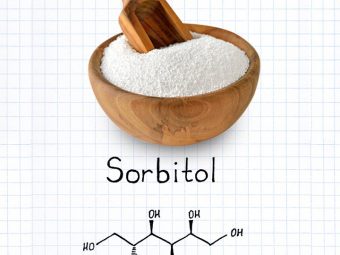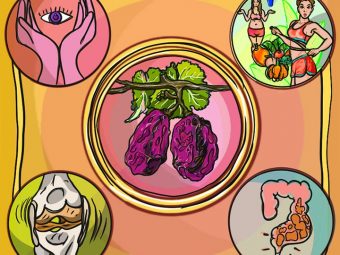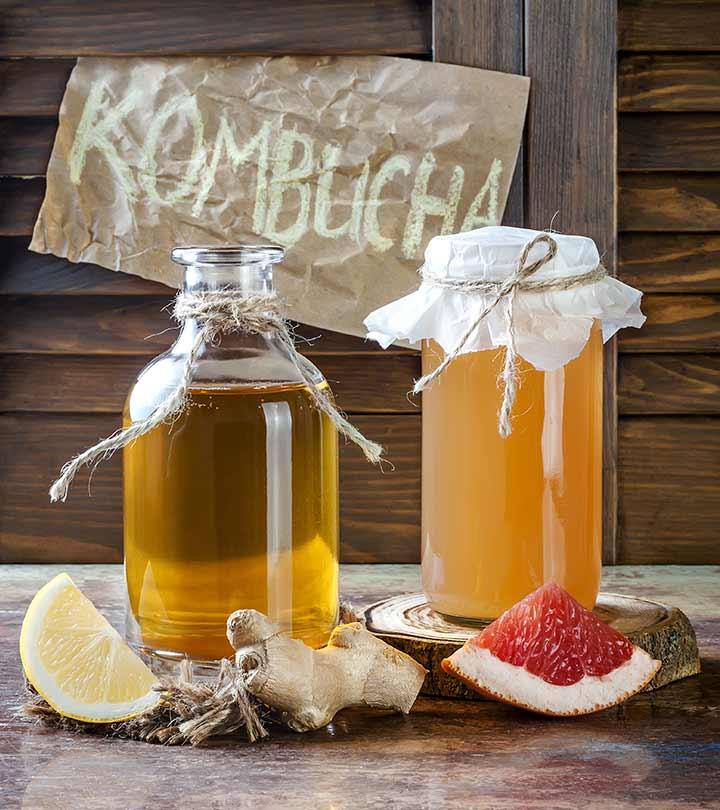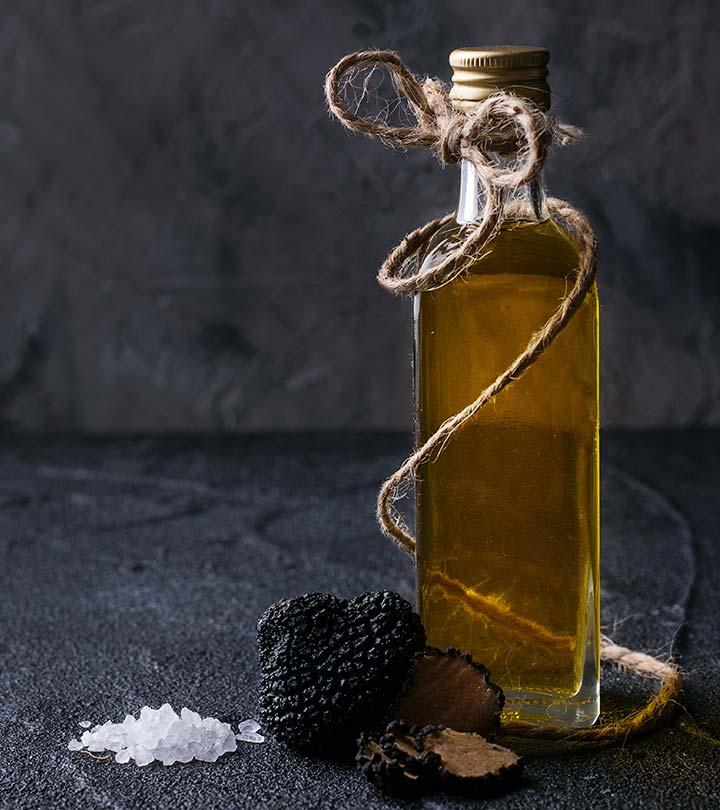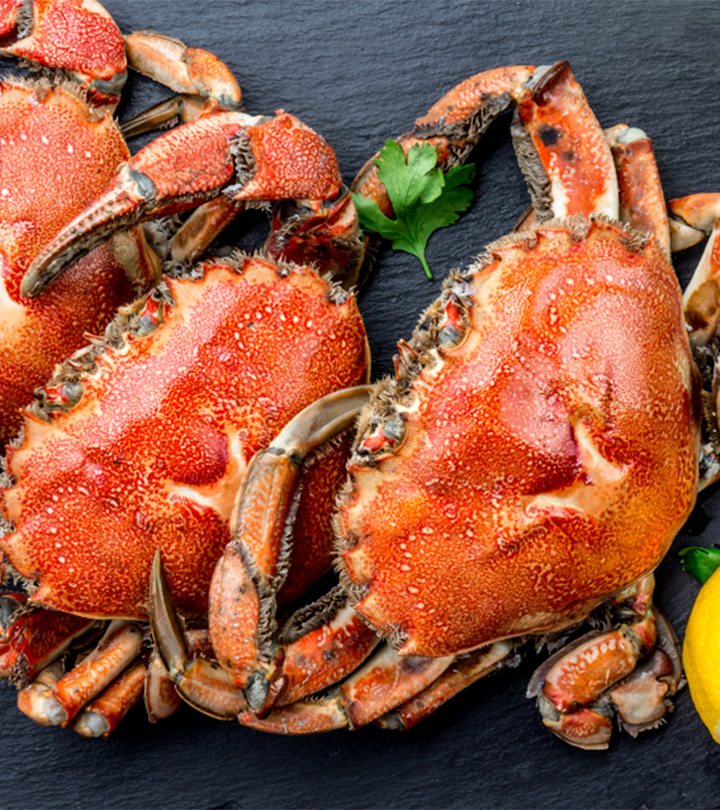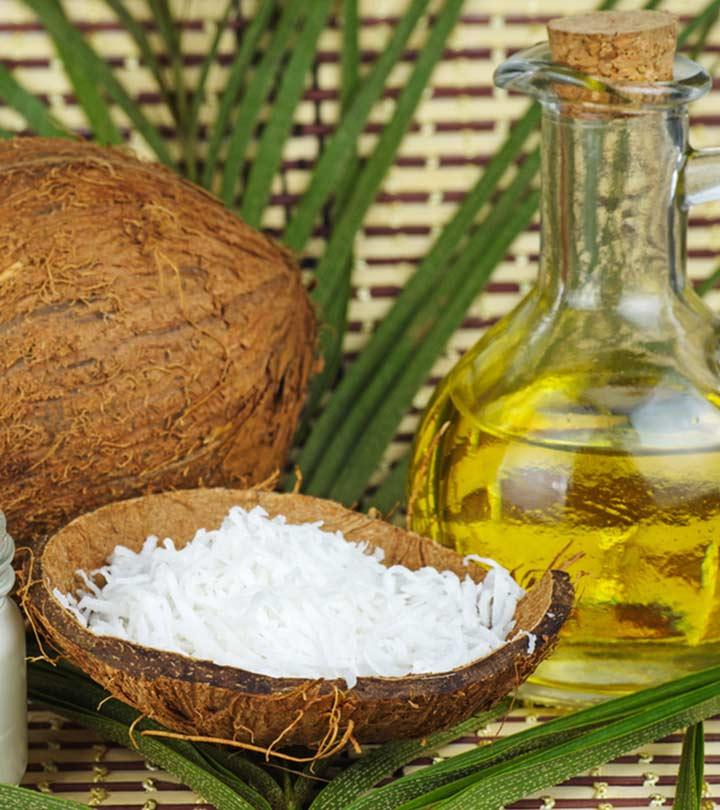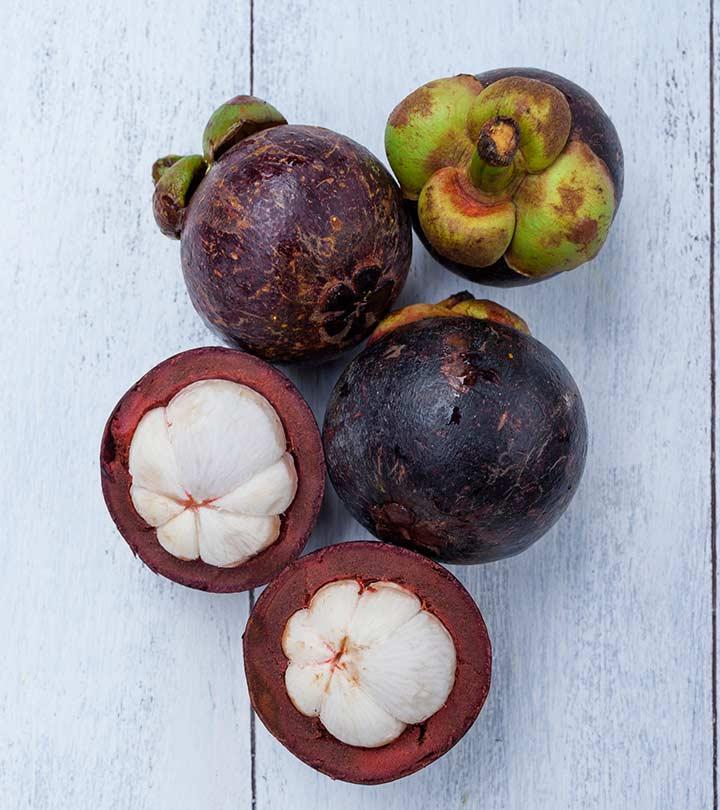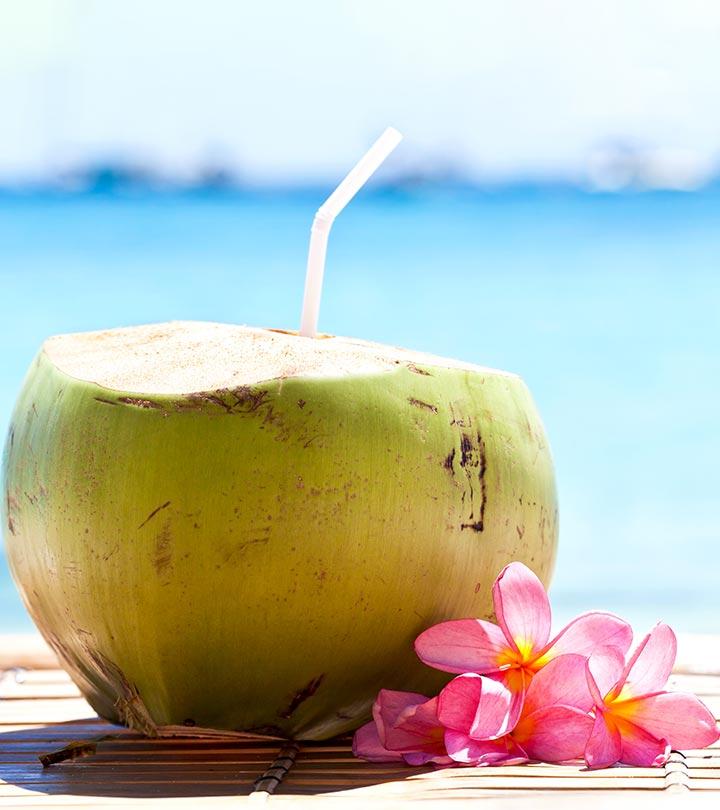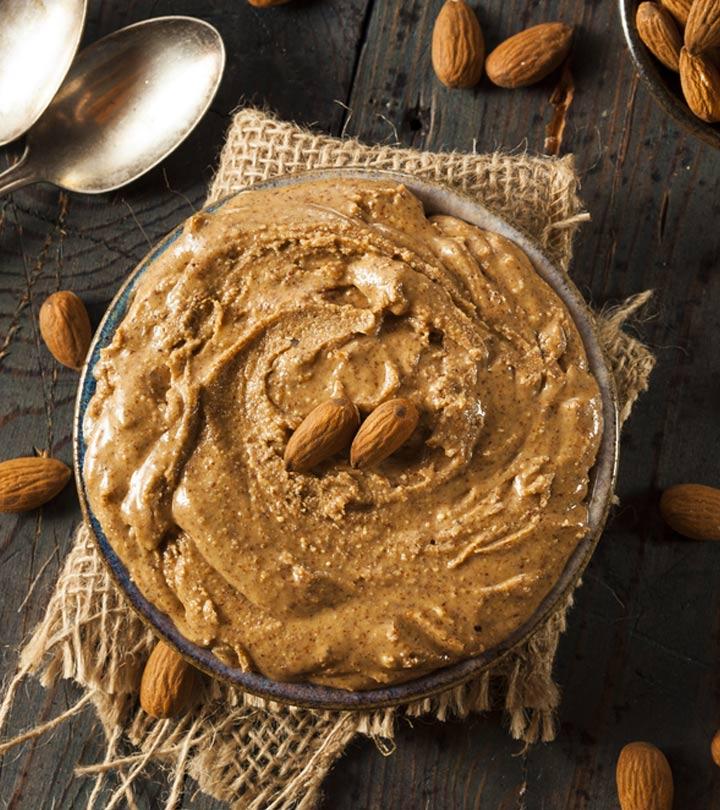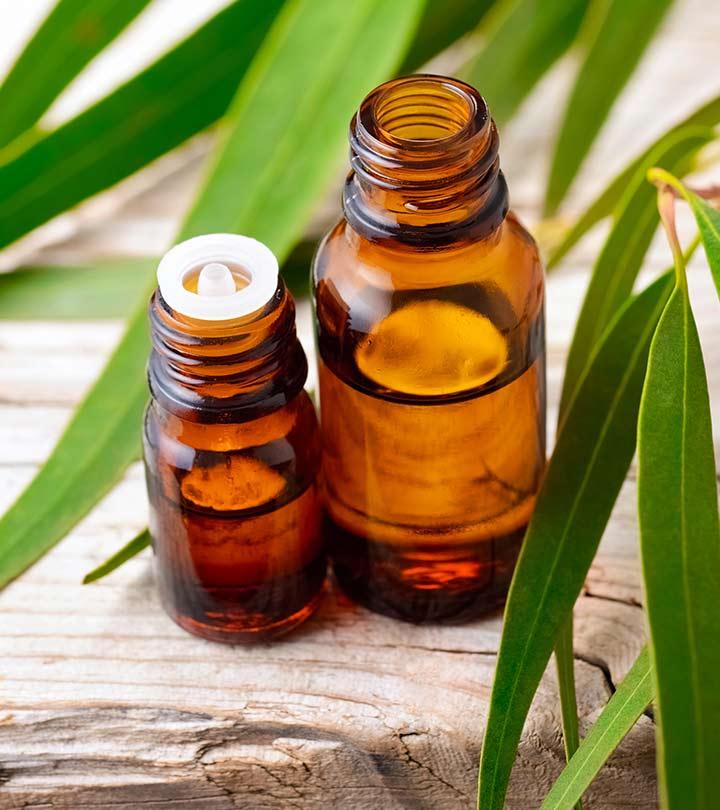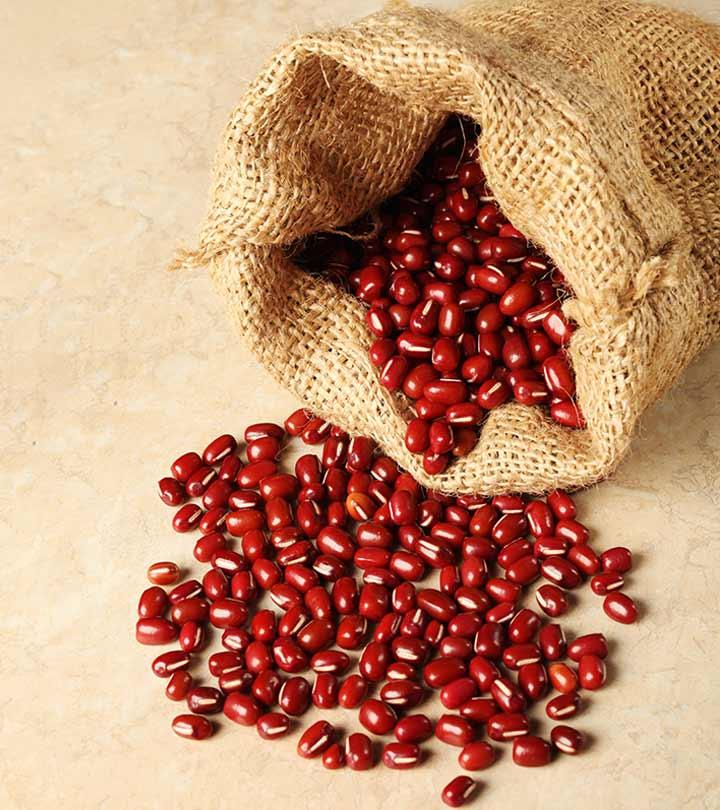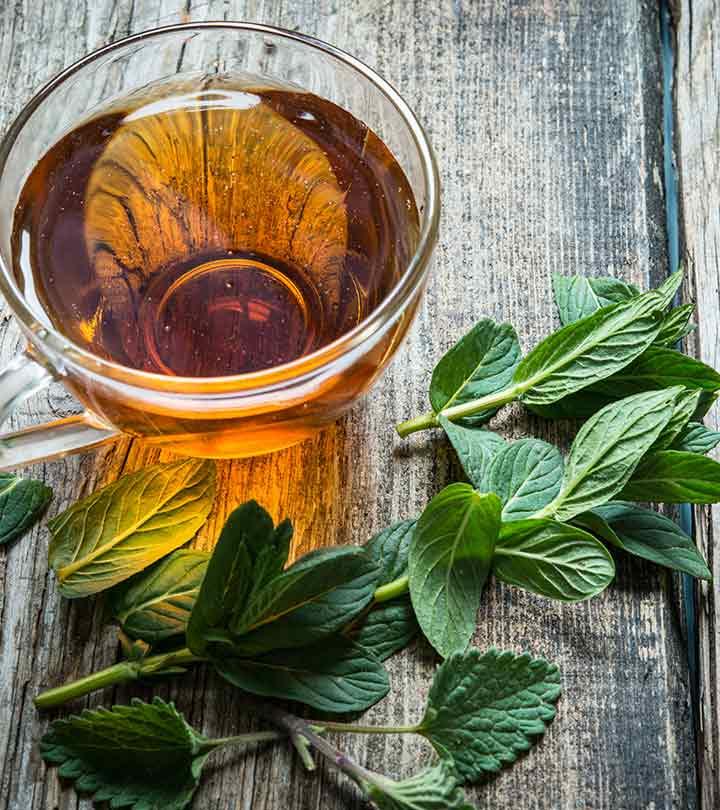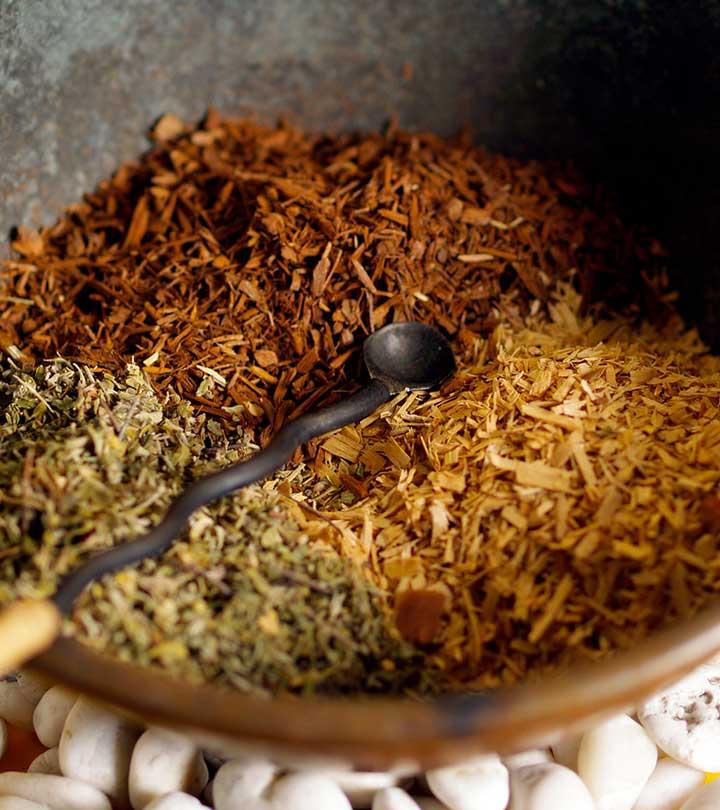Nutrition And Benefits Of Carob: The Best Cocoa Substitute Ever!
Switch your regular cocoa with this healthy substitute and let your body reap the rewards.
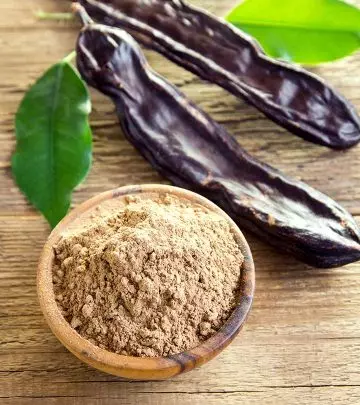
Image: Shutterstock
Carob is a healthy alternative sweetener to chocolate and is a Mediterranean tree with pod-like fruits. The gum produced by these pulpy fruits is used in many food and beverage applications. The health benefits of carob can be attributed to its rich nutritional and phytochemical profile. Carob is also gaining popularity due to its pharmaceutical and therapeutic uses.
The intake of carob can help treat several gastrointestinal disorders like diarrhea, control blood glucose levels, and help with weight management. Here, we explore the potential health benefits of carob, its nutritional profile, and ways you can eat it. Take a look!
 Know Your Ingredient: Carob
Know Your Ingredient: CarobWhat Is It?
Refers to a pod-like fruit that grows on the Ceratonia siliqua tree.
What Are Its Benefits?
Protects the gastric mucosa, prevents pathogenic invasion, treats diarrhea, and controls blood sugar levels.
Who Can Consume It?
People with high blood pressure and those who want to lose weight.
How Often?
It can be eaten every day.
Caution
Pregnant women should consume it in moderation as it may lead to unwanted weight loss and reduced blood sugar and insulin levels.
In This Article
Carob Fruit: In-depth
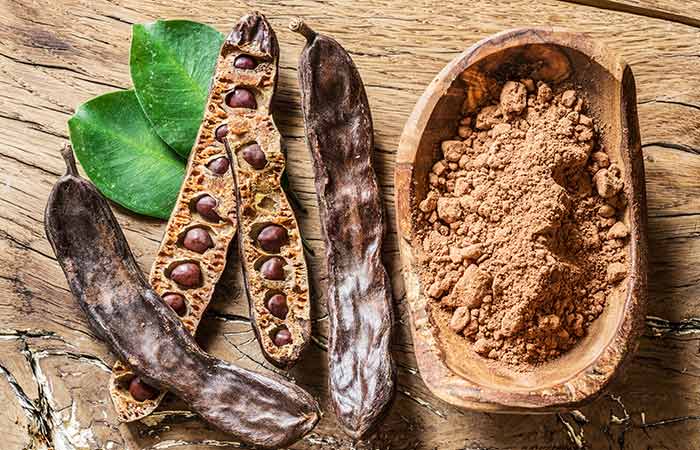
The primary question that arises is what is carob? The carob tree (Ceratonia siliqua L.) is a Mediterranean tree of high economic and therapeutic importance. Its fruit is pod-like, brown, and made of pulp and seeds (1).
Carob fruit pulp is generally high in sugars, like sucrose, fructose, and glucose. It contains 48%-56% sugars and 18% cellulose and hemicellulose. Researchers believe that these pods are exceptionally rich in bioactive ingredients (1).
Carob fruits contain phytochemicals like tannins, dietary fibers, cyclitols, and polyphenols. The best part about them is their low-fat percentage. These phytochemicals can have a range of benefits, including antioxidant, anti-diabetic, anti-cancer, anti-diarrheal, and anti-lipolytic properties (1).
Alex, a registered dietitian and blogger, tried carob and shared her experience in her blog. She writes, “To me, carob has a rich butterscotch taste. It is extremely sweet (of course, my sweet buds are rather sensitive) without adding sugar. Some say it has a tootsie-roll taste. I don’t know. I just like it (i).”
 Fun Fact
Fun FactLet’s take a look at the bright side of carob.
High-on-Carob!
- Carob seeds are commercially important because of their carob bean gum (CBG) a.k.a locust bean gum (LBG). Made from the endosperm of the carob seed, LBG is widely used as a thickener and stabilizer in the food industry.
- Chemically, LBG is a galactomannan polysaccharide with galactose and mannose residues. It is biocompatible, bioresorbable, and biodegradable.
- LBG is also used as a carrier agent for the controlled release of drugs – alone or with other carrier molecules.
- Carob fruit is caffeine- and theobromine-free. It is used as a replacement for cocoa in several decaf foods.
- Carob fruit is one of the richest sources of gallic acid, between 23.7 mg/ 100 g and 164.7 mg/100 g!
- Carob contains all 7 essential amino acids (threonine, methionine, valine, isoleucine, leucine, phenylalanine and lysine) at concentrations that meet the WHO standards.
- Carob is pet-friendly too! You can feed carob snacks to your pets without hesitation. However, it is safer to discuss this with the vet before feeding them.
In What Ways Can Carob Benefit Your Health?
1. Might Treat GERD And Ulcers And Protect The GI Tract
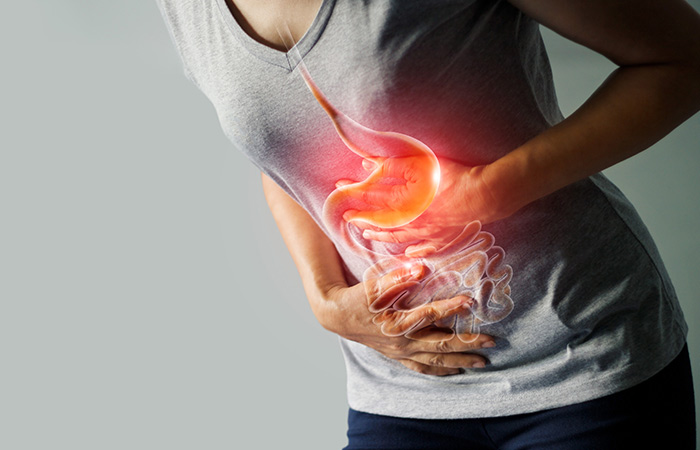
Pathogenic invasions can trigger the production of free radicals in your body. Your gut seems to be the most affected in this process. The reactive oxygen species can damage the inner lining (mucosa) of the GI tract organs. This leads to the development of several gastrointestinal disorders like gastritis, ulcers, gastric cancer, dyspepsia, etc. (2).
Carob extracts can be of great help in such cases. Carob tannins, flavonoids, and phenolic compounds possess high free radical scavenging activity. They protect the gastric mucosa and prevent pathogenic invasion (2).
In a rat study, tannins from carob extract could prevent the development of gastric ulcers by inducing constriction of blood vessels (vasoconstriction). Also, flavonoids showed active anti-ulcer and gastroprotective properties by maintaining gastric mucosal integrity (2).
2. Can Help Manage Acute Diarrhea
Diarrhea is another common side effect of a bacterial or viral attack on your body. It is twice as worse to control and treat diarrhea in infants and children.
In a placebo-controlled study, 3 to 21 month-old infants (with diarrhea) were fed 1.5g/kg tannin-rich carob powder every day for 6 days. It was observed that infants on carob powder recouped quicker than their counterparts (3).
These infants had normal defecation, body temperature, and reduced vomitings. Carob powder was well accepted in infants and did not show any signs of intolerance.
3. Is A Potent Antidiabetic Agent
Traditional medicine touts carob to be a powerful antidiabetic agent. The soluble fibers in carob seed gum can alter the structure of carbohydrates for your digestive health. The fiber reduces the rate of carbohydrate degradation and controls your blood glucose levels (4).
One of the mechanisms behind this antidiabetic property is that carob can inhibit α-amylase and α-glucosidase involved in carbohydrate metabolism.
The fruit pulp also contains flavonoids, tannins, and other antioxidants. These protect the pancreatic cells from oxidative damage and control the severity of this autoimmune disease (4).
Some claim that carob pulp can increase insulin sensitivity. But there is insufficient evidence supporting this claim. However, carob fruit can regulate hyperglycemia and improve glucose tolerance (5).
4. Controls Body Weight, Hyperlipidemia, And Cholesterol
Locust bean gum (LBG) or carob seed gum from carob pulp has anti-hyperlipidemici XThe property of an agent that reduces and counteracts the build-up of lipids in the blood and lowers cholesterol levels. properties. When carob powder was administered to hyperlipidemic rats, there was a dose-dependent reduction in their lipid and cholesterol levels.
These carob-fed rats also showed histopathological normalcy of heart and kidneys – unlike those that were hyperlipidemic. Thus, carob phytochemicals can prevent chronic disorders like atherosclerosisi XA medical condition in which the arteries become hard and narrow because of the build-up of cholesterol plaques. in overweight and obese individuals (1).
Rabbit studies show that insoluble carob fibers affect lipid metabolism. The polyphenol-rich fiber extract enhances the expression of the LDL receptor. It also boosts the cholesterol-metabolizing enzymes. This can protect your liver from lipid accumulation and peroxidation-induced damage (6), (1).
It is evident that almost all the above benefits are linked to oxidative stress. Carob fruit has what it takes to eliminate free radicals and other factors. They are called phytochemicals. Let’s see what active ingredients carob fruits contain.
 Did You Know?
Did You Know?Nutritional And Phytochemical Profile Of Carob Fruit
Carob fruit has a significant amount of sugars in the pulp. Sucrose is the most abundant sugar found in carob (about 52% dry matter), and fructose and glucose are present in small amounts.
Fiber is another component of carob pulp (about 30-40%) (1). This fruit has more insoluble fiber than the soluble fraction. So, you can find more hemicellulose, pectin, cellulose, lignins, and other polyphenols and only about 10% of soluble fiber (1).
Locust bean gum, the white to creamy-white endosperm of carob seed, is of high economic importance. It is mainly composed of galactomannans that are high molecular weight polysaccharides. It is because of these non-fermentable polysaccharides that LBG has been used in jellies, baby foods, etc. (1).
Macrominerals like calcium, potassium, phosphorus, and magnesium have been identified in varying concentrations. Calcium content could be 300 mg/ 100g (d.w) while potassium ranges between 90-1120 mg/100g (d.w).
Carob fruits also contain iron, vitamins, minerals, copper, zinc, manganese, nickel, barium, cobalt, etc. Among the microminerals, iron has the highest concentration (1).
Coming to the active compounds, carob fruit is chock-full of phytochemicals.
The various parts of the carob fruit contain phenolic acids like caffeic acid, hydroxybenzoic acid, chlorogenic acid, cinnamic acid, coumaric acid, ferulic acid, gallic acid, gentisic acid, and syringic acid (1).
Flavonoidsi XPolyphenolic compounds found naturally in many fruits, grains, roots, flowers, vegetables, bark, stems, tea, and wine. , including apigenin, catechin, genistein, eriodictyol, kaempferol, luteolin, myricetin, quercetin, naringenin, chrysoeriol, epigallocatechin, isorhamnetin are dispersed in the fruit, pulp, and seed in varying concentrations (1).
Carob pulp fiber predominantly contains tannins. These contribute to the astringency of the fruit. Carob tannins are proanthocyanidinsi XChemical compounds responsible for the red, blue, or purple hue of several vegetables, legumes, and fruits. composed of flavan-3-ol groups, gallic acid, catechin, epicatechin gallate, epigallocatechin gallate, delphinidin, pelargonidin, and cyanidin (1).
With such an explosive profile, carob is tailor-made to be a superfood!
Don’t you already want to eat it up?
Thankfully, carob is available in various forms. To know what they are, jump to the next section!
How To Eat Carob? What Are The Various Forms In Which It Is Currently Available?
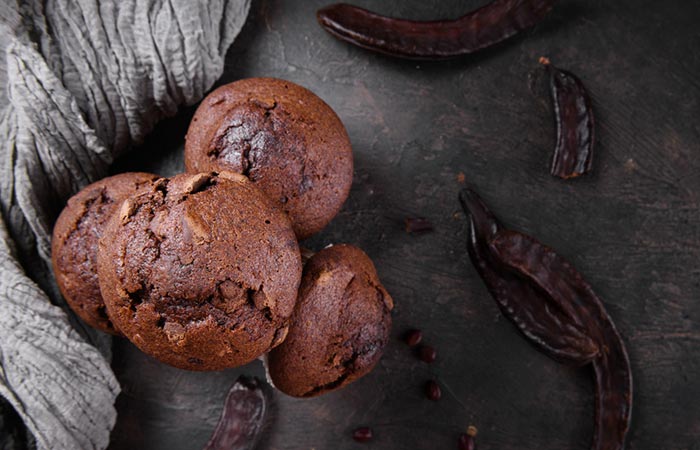
Carob fruit is, slowly but steadily, gaining popularity among health freaks as a healthy replacement for cocoa and coffee. As it is caffeine- and theobromine-free, and has a low glycemic index and negligible fats, you can use carob in your daily cooking.
You can replace the chocolate in muffins, cookies, bars, candies, cakes, and sauces with carob powder from seedless carob pods. You can check it out here.
A few other healthy options you can cook or bake with are carob chips, carob-coated malt, carob seed pods tea, and carob syrup.
Carob vs. Cocoa
In an experiment, muffins made with carob powder were compared with those made with cocoa powder. The observations were surprising (7)!
- Carob muffins were spongier and more delicate than the cocoa ones.
- They were sweeter and less bitter than cocoa muffins. Carob muffins, however, tasted a little beany. Wonder what that means!
- Carob muffins were healthier than their counterparts because of a higher phytochemical content in the former.
- Finally, carob powder is cheaper than cocoa!
You can also buy carob candies, dried carob pods, and seeds (kibbles), and carob bars online.
Carob snacks are vegan, gluten-free, lactose-free, and organic. They promote satiety, curb hedonic hunger pangsi XThe urge to eat foods for the purpose of pleasure without a need to replenish energy or calories for survival. , control glycemic response, and yet give you the energy boost (8). Hence, they are guilt- and cruelty-free!
But does it mean it doesn’t have any side effects? Definitely not. Carob comes with a few side effects. Check them out in the section below.
Side Effects Of Carob
- Those sensitive to carob may experience allergic reactions, including itching, hives, or digestive discomfort.
- Excessive consumption of carob may lead to digestive issues like diarrhea, bloating, or cramps due to its high fiber content.
- Carob may interact with certain medications used to manage gastrointestinal conditions, affecting their absorption or effectiveness.
- Carob-based products, particularly those with added sugars, may contribute to weight gain if consumed in excess.
- Carob, particularly when consumed in larger quantities, may cause tooth discoloration over time. The natural sugars and tannins present in carob may adhere to tooth enamel and cause staining.
Since scientific data regarding its side effects are lacking, always consult a doctor before consuming carob.
Carob is a healthy substitute for chocolate. The gum produced from the fruits of these plants is rich in nutritional and phytochemical properties. The many benefits of carob can be attributed to its antioxidant, anti-diabetic, and anti-cancer properties. In addition, the intake of carob may treat GERD and ulcers, manage acute diarrhea, control blood glucose levels, reduce body weight, and decrease bad cholesterol levels. You can find carob bars, candies, dried pods, and seeds, which are vegan and gluten-free. Include carob in your diet to reap its maximum health benefits.
Frequently Asked Questions
Is carob anti-inflammatory?
Yes, carob has anti-inflammatory properties. The flavonoids present in carob can be attributed to its anti-inflammatory properties.
Is carob acidic or alkaline?
Carob is acidic. Its pH level is around 6.5.
Is carob high in histamine?
No, carob is not high in histamine. It has very low histamine levels compared to cocoa.
Does carob have omega-3 fatty acids?
Yes, carob contains omega-3 fatty acids. 3 g of carob contains 4 mg of omega-3 fatty acids.
Key Takeaways
- Carob pods are rich in sugars, bioactive compounds, and phytochemicals that have antioxidant properties.
- It offers many health benefits, such as protecting the GI tract and controlling body weight and cholesterol levels.
- This healthy alternative to cocoa and coffee is added to food as a powder, tea, malt, syrup, and chips.

Image: Stable Diffusion/StyleCraze Design Team
Carob powder is a nutritious superfood packed with essential vitamins and minerals. Uncover 9 nutrition facts and health benefits of carob powder in this video!
Personal Experience: Source
StyleCraze's articles are interwoven with authentic personal narratives that provide depth and resonance to our content. Below are the sources of the personal accounts referenced in this article.
i. Carob is Not Chocolate;https://www.spoonfulofsugarfree.com/2011/03/23/carob-is-not-chocolate/
References
Articles on StyleCraze are backed by verified information from peer-reviewed and academic research papers, reputed organizations, research institutions, and medical associations to ensure accuracy and relevance. Read our editorial policy to learn more.
- “Functional Components Of Carob Fruit: Linking…” International Journal of Molecular Sciences, US National Library of Medicine.
- “Gastroprotective effect of carob (Ceratonia siliqua L.) against…” BMC Complementary & Alternative Medicine, US National Library of Medicine.
- “Tannin-rich carob pod for the treatment of acute-onset…” Journal of pediatric gastroenterology and nutrition, Us National Library of Medicine.
- “Evaluation of the glycemic effect of Ceratonia siliqua pods (Carob)…” PeerJ, US National Library of Medicine.
- “Ceratonia siliqua L.(immature carob bean) inhibits intestinal glucose…” Journal of the Science of Food and Agriculture, US National Library of Medicine.
- “Supplementation with an insoluble fiber obtained from carob pod…” European Journal of Nutrition, US National Library of Medicine.
- “Effect of Replacing Cocoa Powder by Carob…” Plant Foods for Human Nutrition, US National Library of Medicine.
- “Short-term effects of a low glycemic index carob…” Nutrition, US National Library of Medicine.







